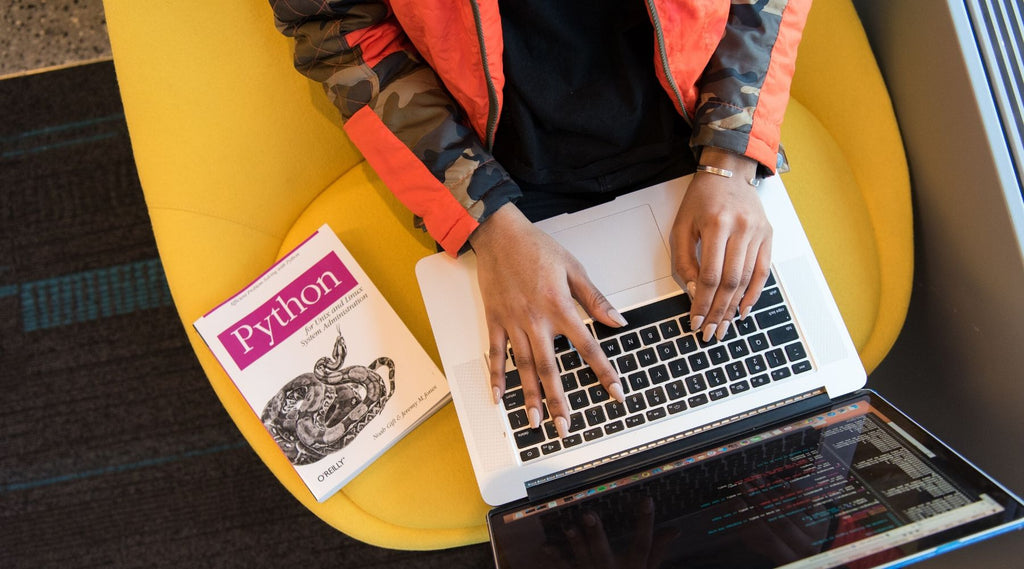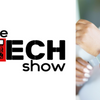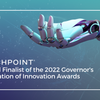Worth - The Founder’s Journey

The Founder’s Journey
The number of female entrepreneurs has grown in recent years, but women still need to close the funding gap.
The founder’s journey is usually marked by many ups and downs and detours along the way. For female founders, the road can often be rockier. Women have made significant strides in the last several decades and are among the fastest-growing and most productive entrepreneurs of our day. But funding gaps and other barriers are still pervasive. In 2018, less than 2 percent of venture capital dollars went to female founders, and yet, female-led companies have delivered 78 percent more revenue for every dollar raised compared with their male-led counterparts.
Fortunately, the landscape is changing. As more women put new companies on the map, they are clearing a path for other female founders to follow. It was this realization that inspired UBS, the world’s largest global wealth manager, to create Project Entrepreneur. Launched in 2015, the initiative has provided training to more than 1,600 female founders, 50 percent of whom identified as ethnically diverse—from 200-plus cities across the country. Project Entrepreneur alumnae have gone on to raise $45 million in funding.
Their success helps pave the way for other female entrepreneurs—and in the end, that benefits everyone. After all, innovation cannot happen in a vacuum. It requires a diversity of ideas coming from people who see and solve problems from many different angles.
However, far too many women remain cut off from the capital and support networks they need to take their companies to the next level. Knowing this, Project Entrepreneur is now shifting its focus to helping more established female-founded companies gain greater access to capital. As more of these companies achieve scale or successfully exit, it creates a virtuous cycle that opens more doors for female entrepreneurs.
To that end, UBS, in a new partnership with Female Founder Collective, a network of 5,000-plus women-led businesses co-founded by Rebecca Minkoff and Alison Wyatt, will open doors to more female founders via Project Entrepreneur multicity cohort programs, capital access summits and community building events for founders and investors.
Here, three Project Entrepreneur alumnae share their own startup journeys, including the lessons they learned and the connections they made.

Tina Hedges | LOLI
Tina Hedges officially launched LOLI—short for Living Organic Loving Ingredients—in March 2018, but the idea for a waste-free organic beauty line was decades in the making. Growing up in Jamaica, Hedges watched her grandmother and mother make their own skincare products with natural ingredients they sourced locally.
Hedges would go on to work as a marketer for some of the world’s largest beauty brands, start a vegan haircare company and play an instrumental role in other startups. When she realized that her own beauty routine needed a reboot, she went back to the basics, blending food-grade ingredients into her own serums, scrubs, and moisturizers in her Manhattan studio. So began LOLI, which has since won industry accolades, attracted outside investors and gained a large and loyal following.
I chose to self-finance the initial product development and market testing because I knew what I was doing was disruptive. I wanted to unbottle beauty and make a fully zero-waste skin, hair and body brand at a time when consumers still clung to their pink plastic tubes and gold foil. If I wasn’t willing to bet on myself, how could I ask others to invest in me? Also, having been in the startup world before, I knew how difficult it was to raise money, particularly as a female founder over the age of 40.
I put in about $150,000 of my own money to create the initial product, built a website and did some pop-up experiences. In 2016, I shipped more than 1,000 boxes and got some incredible press. The next year I raised $1 million in angel funding, got into a tech accelerator and spent the year reinventing the brand for launch.
I could talk for hours about how the experience is different as a female entrepreneur. Women, I think, tend to be more transparent about the challenges ahead, whereas many male founders walk in a room with an attitude of “I’m crushing it.” I’ve been told that I ask a lot more questions when meeting with investors, including what their expectations are and what I can expect from them. This can make fundraising more difficult, but in the end, I think it’s a benefit.
One of the best things about Project Entrepreneur was the relationships it helped me cultivate, including with people who would eventually become investors and the other women in my cohort. Three years later, we still talk regularly. The journey of an entrepreneur can be quite lonely. As much as you want to share with your family and friends, it’s hard for them to understand the pressure that you’re under. Having that camaraderie has been so important.
Looking back, I regret not raising more money upfront. The initial funding gave me enough money to launch and get through the first critical days, but just as we started to get some traction, I had to go back and raise money. Raising money can be an incredible time suck, and it is virtually a full-time job. To raise my second seed round, I must have talked to 75 investors over a period of four months.
My advice for anyone starting a business is to ask some deep questions about why you’re doing this—because you need to have superpowers. You need a construct for how to build a business and make it profitable, but your motivation has to be something more than money or ego. What gets me up every single day is that I truly believe that the beauty industry is wasting water, exposing people to toxins and putting plastic in the oceans. Without this as my dharma, I would have given up on LOLI a long time ago.
///

Christine Schindler | PathSpot
A biomedical engineer, Christine Schindler spent the early part of her career living and working in Tanzania, where she helped develop low-cost technologies to solve medical problems. When she moved back to the United States, she was struck by the pervasiveness of foodborne illnesses, most of which could be avoided with better control of hand-washing in food preparation.
This was the impetus for PathSpot, a hand-scanning device that mounts on the wall in restaurants, food packaging facilities and farms that detects bacteria and viruses. Less than three years after its launch, PathSpot is installed in hundreds of locations and is expanding into new markets and verticals.
It seemed like every time I turned on the TV, there was news about people who were getting incredibly sick from foodborne illnesses. There are systems that can detect harmful contaminants, but they are incredibly expensive and aren’t set up for restaurant environments. It reminded me of what I was working on in the developing world, and I wondered if I could build a lower-cost solution.
I went to a RadioShack liquidation sale, bought different electronic components and started experimenting with ideas at night and on weekends. Meanwhile, my cofounder and I went door to door, asking restaurants if they’d be interested in a system that could spot contaminants. They all said yes. The only thing most businesses usually have to protect the public against foodborne illness in restaurants are signs that say “Employees must wash hands before returning to work.”
Then I quit my job, sold my car and bought a 3D printer. My co-founder and I agreed we had about six months to make this into something. Every single day, we used the 3D printer to build a new prototype, took it to restaurants to get feedback and came back to make changes at night. We did that for about three months until someone said, “Yeah, OK, I’ll put it on the wall.”
Going out and getting that initial feedback was key. With some of our early customers, we said, “You can have the technology for free if you take 10 investor calls.”
When it was time to bring in investors, we made a wish list. We approached fundraising not just from a capital perspective but also by thinking about what kind of expertise we needed. Then we searched for investors who fit those profiles.
A lot of the introductions came through other founders. Through that process, not only did we learn more about potential investors but we also got to know other founders. We raised $4 million in seed funding in 2018 and 2019. We’re now preparing for additional capital raises in 2020.
If I could do this again, I would be more honest with myself when something was a “no.” In sales, hiring and fundraising, you want to believe that “maybe” is a “yes,” when it usually is not. There were times when I got held up by a lot of wishful thinking when I could have been doubling down on people who really bought in on the vision quickly.
Project Entrepreneur was instrumental. Being in the accelerator for five weeks, touring offices of other startups and hearing from so many groups made it possible to visualize what the next stage might look like. I also can’t say enough about the connections I made with the other founders in my group. We are constantly pinging each other, whether it is “Hey, what tax software do you use?” or “I just had a really bad meeting. Can we hop on the phone for 30 seconds so I don’t get discouraged?”
///

Vicki Mayo | TouchPoint Solution
The inspiration to start TouchPoint Solution came to Vicki Mayo (pictured left) in 2015 after many sleepless nights spent helping her young daughter deal with night terrors. Mayo shared her frustrations with her friend, Dr. Amy Serin, who suggested Mayo try a technology she had been testing in her clinics. “It was like magic,” says Mayo, who urged Serin to make the technology widely available.
Together they created TouchPoints, wearable devices that administer micro-vibrations that alter the body’s stress response. Their Scottsdale, Ariz.–based company has won dozens of innovation awards, and the treatment has been recognized as effective for a wide range of users, from children prone to tantrums to stressed-out adults.
We self-financed the initial development of TouchPoints in part because we were able to negotiate with vendors about purchase minimums. I talked to the manufacturer and said, “I can only pay you for 100 units, but I’m going to sell them and when I do, I’ll use that money to buy more.” I held the first prototype in my hands in May 2016. We launched on Kickstarter in December 2016 and did more than $250,000 in sales in a month.
TouchPoint Solution was my sixth startup. My philosophy has always been to work hard, grow the business slowly and reinvest the profits. I have never had outside investors, but I decided that TouchPoint was different. I wanted to get it into as many hands as possible, and I thought that would require capital. That realization is what led me to apply for Project Entrepreneur.
My husband, our four kids and I moved to New York for the summer for Project Entrepreneur. We were basically able to get under the hood of operations at more established companies during the accelerator program. Things that I picked up from a marketing perspective were priceless, including understanding how to pitch to the media and how to do better email marketing. By the time I left, I’d put together strategies that allowed us to take the company to the next level.
But when it came to investors, we struck out. TouchPoint Solution had already done about $1.5 million in sales, so it wasn’t unproven. Still, we’re in a unique niche that sits at the intersection of manufacturing, technology, and health science. It’s cutting-edge, but it’s a strange area—and it’s a strange area for a woman. In 2019, we decided to stop seeking investors.
I wish someone had said to me, “Vicki, do what you know is right for you, for your company and for your team, and every other piece is going to fall into place.” It is hard to stick to your guns and to trust yourself. But if you don’t trust yourself, then who else is going to?
We went back to our original model of having a core staff but using outside contractors as needed. This has proven to be the right path. In addition to our consumer sales, our devices are now in 20 rehabilitation facilities, more than 40 school districts and hospitals and other clinical settings. Now, instead of our going out and begging investors for meetings, I have people calling me saying they’d like to invest.
I think the landscape has improved dramatically for female founders. Yes, I ran into roadblocks with TouchPoints, but I don’t think it was solely because I was a woman. I actually think the playing field has leveled out a lot over the last few years and that the investor community has embraced female founders. Do we have a long way to go? I’d say 100 percent. But have we made a lot of progress? Again, 100 percent.
This presentation is for informational and educational purposes only and should not be relied upon as investment advice or the basis for making any investment decisions. The views and opinions expressed may not be those of UBS Financial Services Inc. UBS Financial Services Inc. does not verify and does not guarantee the accuracy or completeness of the information presented.
In providing wealth management services to clients, UBS offers both investment advisory and brokerage services which are separate and distinct and differ in material ways. For information, including the different laws and contracts that govern, visit ubs.com/workingwithus.
Persons included in this document may or may not be clients of UBS but were not selected for inclusion based on any existing or prospective relationship with UBS. The Female Founder Collective and UBS Financial Services Inc. are not affiliated. The individuals profiled in this document were selected based on their experiences and professional history.
UBS Financial Services Inc. is a subsidiary of UBS AG. Member FINRA/SIPC.
This article first appeared on Worth on February 26, 2020, by Sarah Max. To read the full article, click here.




